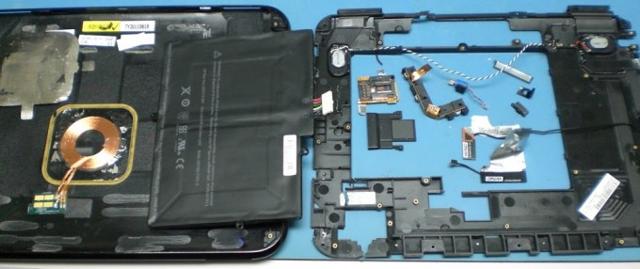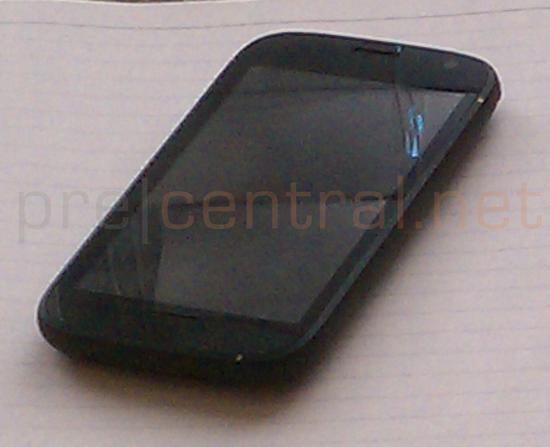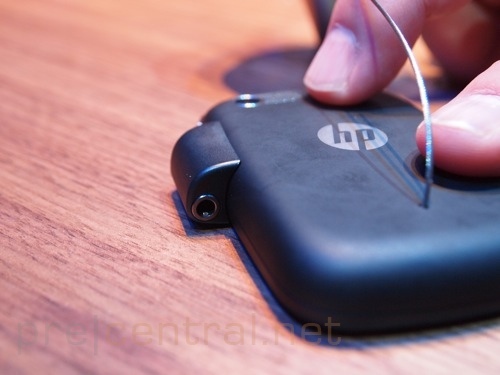palm
Treo 750v – Official Specs

What better way than to get information straight from the horse’s mouth? The new Palm Treo 750v has now arrived on European shores, bringing you phone, e-mail, messaging, and web functions in a single device. Running on Windows Mobile 5.0, the Treo 750v keeps you connected no matter where you are, enabling you to be productive outside the office without missing a beat. The 300MHz Samsung processor is ably supported by 128MB non-volatile flash memory to handle all the applications and tasks thrown at it smoothly. For a full length of the official specifications, read on after the jump. Operating System: Windows Mobile® 5.2
Radio: GSM/GPRS/EDGE/UMTS radio, GSM bands: 850/900/1800/1900, UMTS bands: 850/1900/2100
Phone Features:
• Personal speakerphone
• Hands-free headset jack
• Microphone mute option
• TTY/TDD compatibility
• 6-way calling
Memory: 128MB / 60MB nonvolatile flash memory available to user
Processor: 300MHz Samsung processor
Expansion: miniSD memory card slot
Battery:
• Removable 1200 mAH Lithium-ion
• Talk time: up to 4.5 hours GSM / 2.5 hours UMTS
• Standby time: 10 days
• Data preserved by persistent file system
Screen:
• 240 x 240 colour TFT touchscreen display
• 16-bit colour displays over 65,000 colours
Connectivity:
Bluetooth® 1.2 wireless technology, Infrared (IR)
Camera:
• 1.3 megapixel with 2x digital zoom
• Automatic light balance
• Integrated self-portrait mirror
• Video capture support
Audio:
• 2.5mm headset jack is stereo headset compatible (stereo headset included)
• Polyphonic MIDI, MP3, WAV & video ringtones
• External ringer on/off switch with vibrate mode
Keyboard:
• Full QWERTY key layout with backlighting
• Integrated number dial pad
• Keyguard feature
Power/Sync:
• Multi-connector on device
• USB sync cable
• International adapter (EU, UK, Aust. And NA plugs included)
Size: 111mm x 58mm x 22mm
Weight: 154 grams / 5.4 ounces

palm
Palm Touchstone Mod Figures Out Nexus 7 Puzzle
 The Palm Touchstone can be said to be quite the exquisite piece of consumer electronics technology, having introduced wireless charging to the failed line of Palm smartphones. Actually, when you mull over it, don’t you think it to be rather strange that HP’s Palm and webOS failed eventually, despite showing a fair bit of promise, especially with webOS’ card-type mobile operating system? Well, it seems that the Palm Touchstone that you see above is in the middle of being repurposed so that it will play nice with the Nexus 7 from Google. This is not the first time something like it has happened, as there has been previous mods made to the Palm Touchstone to have it play nice with Android smartphones, but Rod Whitby of webOS Internals fame figured out he wants something that would work with his Nexus 7.
The Palm Touchstone can be said to be quite the exquisite piece of consumer electronics technology, having introduced wireless charging to the failed line of Palm smartphones. Actually, when you mull over it, don’t you think it to be rather strange that HP’s Palm and webOS failed eventually, despite showing a fair bit of promise, especially with webOS’ card-type mobile operating system? Well, it seems that the Palm Touchstone that you see above is in the middle of being repurposed so that it will play nice with the Nexus 7 from Google. This is not the first time something like it has happened, as there has been previous mods made to the Palm Touchstone to have it play nice with Android smartphones, but Rod Whitby of webOS Internals fame figured out he wants something that would work with his Nexus 7.
Rod relied on a pair of standard phone Touchstone coils, and he has more or less managed to know just how the charging circuit works, with the remaining bit to be figured out being the assembly of stuff. Hopefully Rod will get the job done, and in due time!
palm
HP keyboard-less webOS running phone spotted; what’s your guess?

Other than iOS and Android, the only other platform which has always looked decent is the webOS and hence a device running the same does generate a lot of interest. The latest anonymous device spotted running the webOS comes from HP and it was precentral which got lucky with some images. There is no clue regarding its dubbing as even pre central is not sure what this keyboard-less doodad is to be called. The tipster that sent PC these images claims it to be an an EVO with webOS and he says this device is yet to be announced. It bears semblance to the Verizon Palm Pre III so it could easily be a keyboard-less (touch-centric) version of the Pre III. What are your guesses people?
hp
HP Veer requires tiny magnetic connector for a 3.5mm audio jack

Small phones are generally cute and slip into pockets easily, but there are times when a phone is too small that it becomes a nuisance. You might not have noticed it before, but the tiny HP Veer was so small that it didn’t feature a microUSB port or 3.5mm headphone jack, possibly due to space constraints. In order to solve that issue and allow users to use a headset, you’ll need to attach a small low-profile magnetic five-pin connector to get the 3.5mm audio jack, and the same goes for the USB connector. Of course, this raises additional questions, such as whether the magnet is strong enough to keep the audio jack stuck to the phone while we’re walking around, and how convenient it will be to keep such a tiny accessory in our pockets without losing it.
